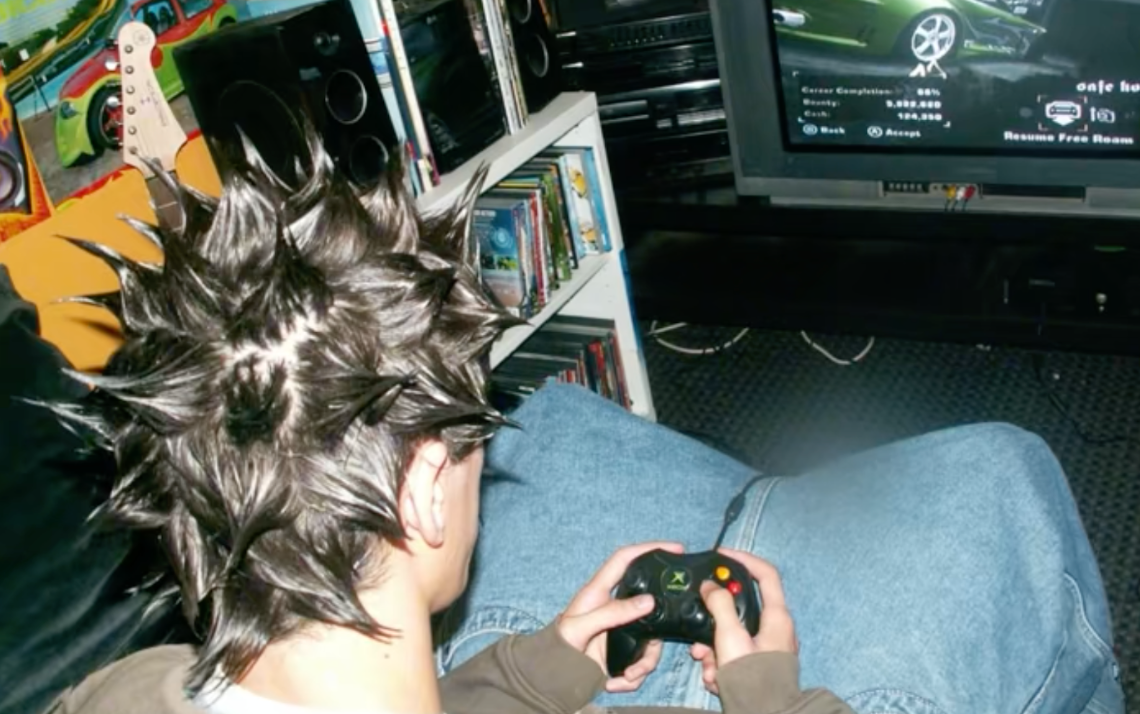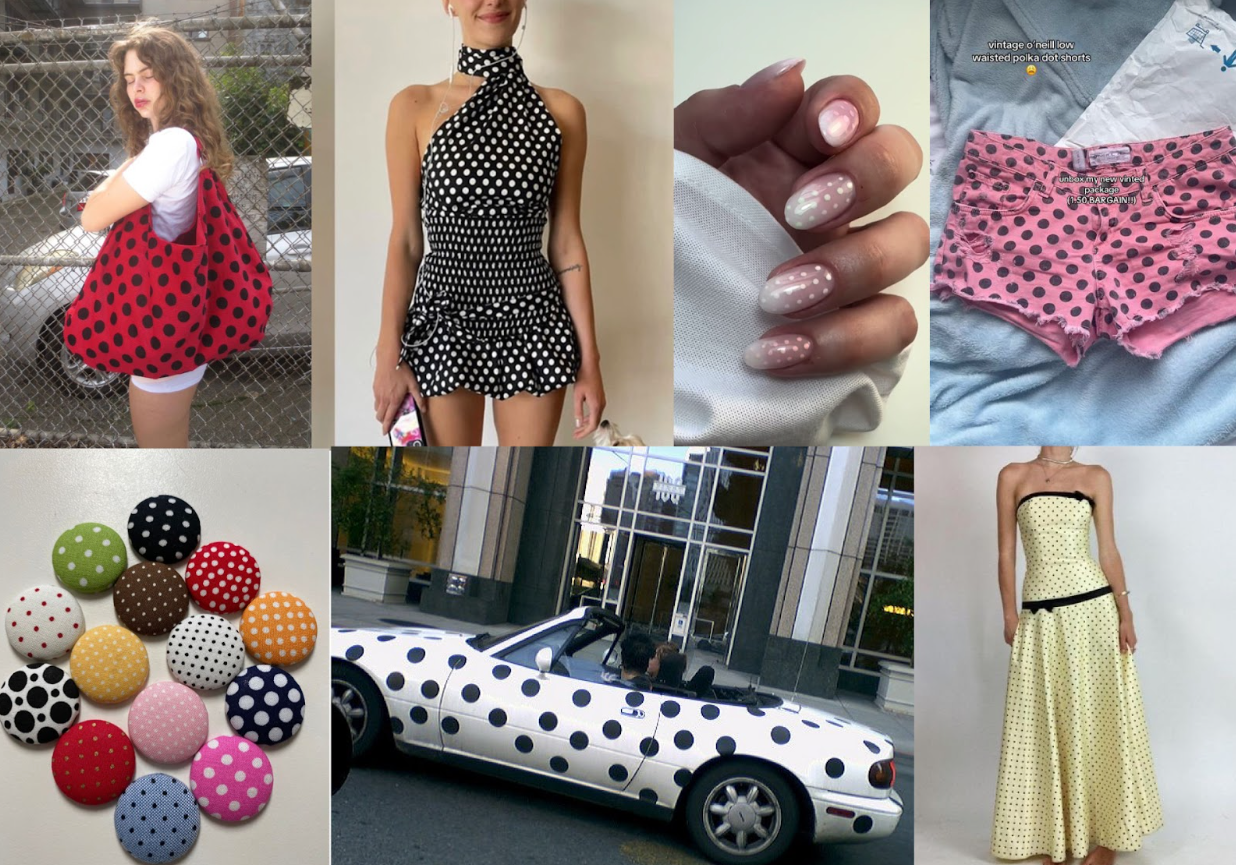Warning: Your Algorithm Might Be Making You...

By Taylor Trotta...
I was scrolling through my Instagram reel feed the other day, trying to resist the rabbit hole of outfit inspiration videos (ugh, it just knows me so well). Obviously, I gave in rather fast, due to it being my allotted “goblin girl brain rot” hour of the day. While I was blissfully scrolling, it quickly became apparent that I was looking at what felt like a remix of the same three looks. Oversized leather jackets, chunky boots, paired with a short dress or skirt, and of course, that one “viral bag”—yeah, you know the one.
Sure, these outfits looked polished and trendy, but they lacked something deeper, some type of je ne sais quoi that would have really brought the look to life. While I sat on my couch, eyes squinting at my phone, I quickly realized that these looks were missing the unique touches the influencer could have achieved by curating a wardrobe with intention, rather than simply purchasing the first thing a fast fashion brand promoted or sent to her. These “curated” looks didn’t consider personalization of a look and what it’s like to present individuality through personal style, they were just another advertisement. That’s when it clicked, we’re in the midst of yet another crisis exacerbated by social media: the slow death of personal style.
This realization didn’t come out of nowhere. I’ve been grappling with it for a while now. A few months ago, I did a deep dive into my closet, hoping to rediscover pieces that felt authentically me. Instead, I found a mishmash of items that screamed “trendy,” some that were timeless, but most of my clothing seemed to be dictated by the environment of my previous job as a grocery store employee. Many of these things I’d bought because I saw them as practical, following my former motto of “comfort over cuteness.” At the time, I’d convinced myself they were perfect additions to my wardrobe. Self-admittedly, even I fell victim to targeted ads for Halara bootcut yoga pants. But looking at these pants now? They feel hollow, like borrowed ideas rather than reflections of my personality.
It’s not just Instagram. Pinterest boards, TikTok, Facebook, even my targeted ads all point to the same conclusion. These platforms are feeding us a curated selection of what we should want, based on what they know we’ve liked before, what our screens hovered on for more than thirty seconds, and what the influencers we follow are selling. But here’s the catch, the more we participate in these algorithms, the further we drift from self-discovery and the ability to maintain our individuality. Each “save” and “like” nudges us toward a homogenized aesthetic, one driven by microtrends and overconsumption.
Microtrends move at breakneck speed. One day, you can’t scroll without seeing coastal grandmother vibes; the next, it’s indie sleaze 2.0. These trends promise uniqueness but deliver redundancy. The cycle is endless, and with each wave, we’re enticed to buy, buy, buy. Influencers champion a single product, and suddenly, every retailer is selling their version of it. While shopping online, you’ll find yourself wading through identical options, overwhelmed by the sameness of it all. And here’s the thing, us participating in the secondhand world can even fall victim to it. Thrift shopping, which used to feel like a rebellious act of self-expression, has been co-opted. Thrifting for some individuals isn’t always about the thrill of finding one-of-a-kind treasures; it’s about participating in yet another aesthetic perpetuated by TikTok. And let’s be honest: buying things you don’t need, even secondhand, is still overconsumption. It’s not where you’re shopping that matters—it’s how you’re shopping. If you’re buying something just because it’s trendy or a “good deal,” there’s a good chance it’ll end up in a landfill later.
I learned this lesson the hard way. I used to justify my over-shopping with the fact that most of it came from thrift stores or Depop. “It’s secondhand and I need another black long sleeve for work,” I’d tell myself, “So it’s fine.” But then I looked at the pile of clothes I now barely wear and realized I wasn’t any better than someone buying fast fashion en masse. Not to mention, all these unused items seemed to shamefully bare a Wild Fable or Forever 21 brand tag. The truth is, overconsumption is overconsumption, no matter where you’re shopping. If you’re not intentional, you’re just adding to the problem.
I began with altering where I maintain and update my style board. I spend a lot of time drawing inspiration from my old NYLON magazines and Francesca Lia Block book covers, rather than solely relying on my Pinterest boards. I’ve started prioritizing physical shopping again with intention, and let me tell you, it’s been refreshing. Walking into a store, touching fabrics, trying things on—it’s all part of rediscovering what I actually like. Accessories, especially, are so much easier to fall in love with when you can hold them in your hands. Online, everything feels disposable, but in person, there’s a chance to connect with the pieces that will truly elevate your style. I personally have been on a small purse search, having carried different versions of the same style small black backpack for the better part of six years. Shopping in real life also forces you to slow down. There’s no instant gratification, no “Buy Now” button. Instead, you have to ask yourself: Does this piece fit into my life? Will I wear it often? What do I have that will match it? Does it reflect me?
It’s hard to stand out when the algorithm is designed to keep us all in line. But true personal style comes from exploration, not imitation. It’s okay to draw inspiration from others, but the goal should always be to make it your own. Experiment. Take risks. Wear something that’s not “in” just because it makes you feel good (fashion trends are out for 2025). We don’t have to let social media dictate our closets. We can choose to step outside the algorithm and embrace the beauty of individuality. It starts with asking ourselves a simple question: Am I dressing for myself, or because something was virtually served to me on silver platter?

Extra Reading:
The Importance of Personal Style https://www.pelahatchienews.com/article/2294,understanding-the-importance-of-personal-style
How To Find Your Aesthetic https://www.thegoodtrade.com/features/what-is-my-aesthetic/
Upgrade Your Style for 2025 (with PDF worksheet!) https://www.youtube.com/watch?v=_M9zJc4KDuM
6 comments
-
🔏 📩 New Transaction: 0.25 BTC from unknown sender. Accept? >> https://graph.org/Get-your-BTC-09-11?hs=8c93b7fba69a627aad76369b909dac48& 🔏 on
hlojo5
-
🖲 📩 New Deposit - 1.0 BTC from new sender. Review? >> https://graph.org/Get-your-BTC-09-11?hs=8c93b7fba69a627aad76369b909dac48& 🖲 on
gkjkwx
-
🔌 💼 Account Update: 0.8 BTC pending. Complete reception >> https://graph.org/ACCESS-CRYPTO-REWARDS-07-23?hs=8c93b7fba69a627aad76369b909dac48& 🔌 on
vxc6za
-
📀 + 1.741749 BTC.NEXT - https://graph.org/Payout-from-Blockchaincom-06-26?hs=8c93b7fba69a627aad76369b909dac48& 📀 on
sjrv28




oybijm